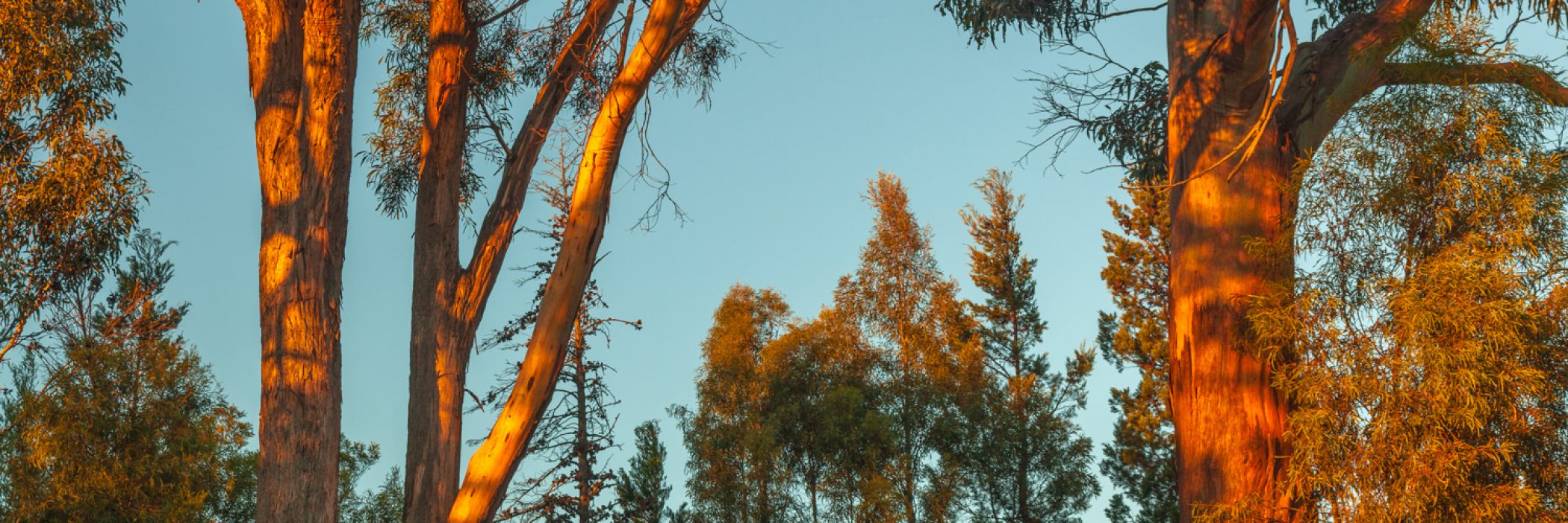Pedalling Forwards
I was following a series of white posts along a barely discernible trail through the forest, often losing my way. A fine drizzle was making everything wet, and my shoes were sodden. Spider webs strung with droplets of water crisscrossed my route, and mist obscured the surrounding hills. Everywhere the sound of dripping water and the rustling of my wet weather gear.
My hosts, Tom and Jane, whose private forest I was traipsing through, had asked me why I wanted to do this. I’d been walking for over an hour, and was starting to wonder this myself. I’d told them I wanted to know what makes this land special and to better understand why they took such an unusual course to protect it. I wanted to see, feel and experience the place firsthand.
Around me were eucalypt and wattle trees, while bracken, moss, lichens and tufts of sedge covered the ground. The trees were mostly new growth, so there wasn’t the sense of timelessness that I feel when walking amongst ancient giants in an old growth forest. I suppose instead there was a sense of potential and I tried to imagine what this forest could become.
This was one of two properties I was visiting in the area, and after saying goodbye to Tom and Jane, I cycled for an hour to another large block of land beside the Little Swanport River. The gate was locked but I had permission to enter so I hauled my bags and bike over the fence to set up camp in a clearing. This morning I woke up early to watch the sunrise, then set off into the forest.
The land here in eastern Tasmania was once carved up, logged for timber, cleared for pasture and crops, and crisscrossed with roads and fences. But now here, as in many other parts of the world a lot of land is being left to become wild again. New Scientist recently declared in an article that for the first time in recorded history, the world’s farmland is shrinking. Every two years, an area the size of Britain is abandoned. Grasslands are returning and the forest is slowly growing back.
This seems to be what’s happening on this site in Little Swanport. There’s substantial old growth eucalyptus forest on the slopes and beside the river, with lots of blue gums, but the flatter areas look as if they were used for grazing until recently and are now mostly filled with silver wattle trees less than ten years old. Here and there sit massive tree stumps, a metre or two in diameter — testament to the logging industry and how large the trees once were. The land feels a lot more degraded than the site I visited yesterday. Why would there be such an interest in protecting it?
The blue gum forest by the river is beautiful, and around mid-morning I stop there for a phone chat with Phil Roach, the Community Engagement Coordinator for the Tasmanian Land Conservancy, who I first spoke to about visiting the site. He tells me about their work and the story behind this place.
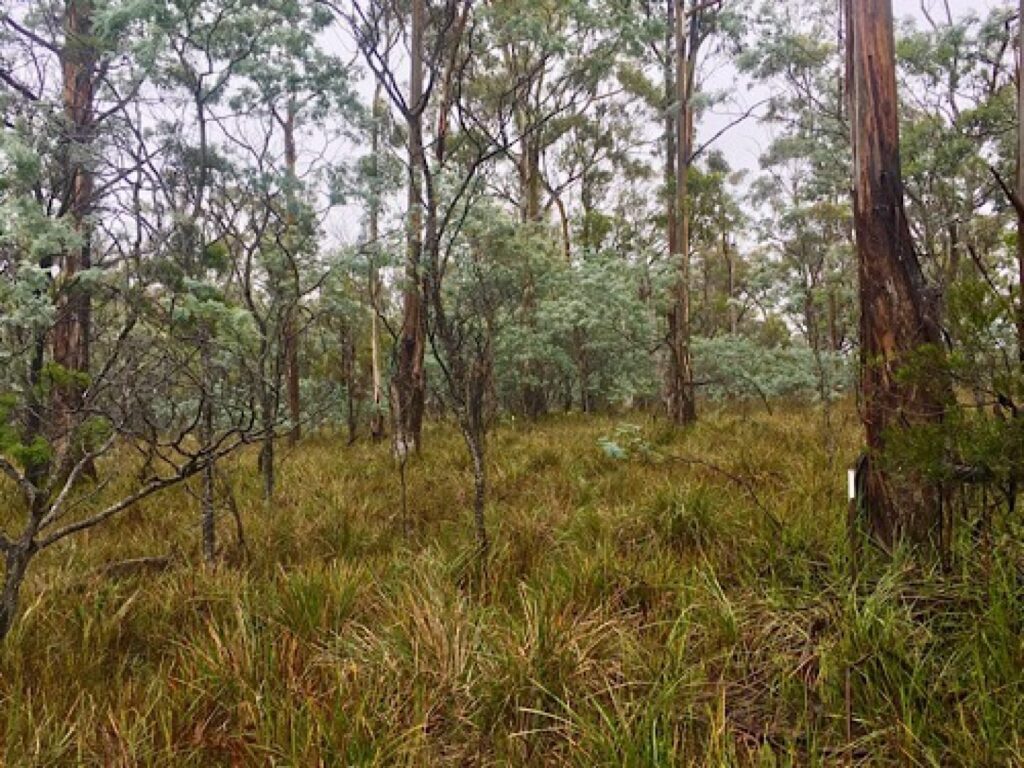
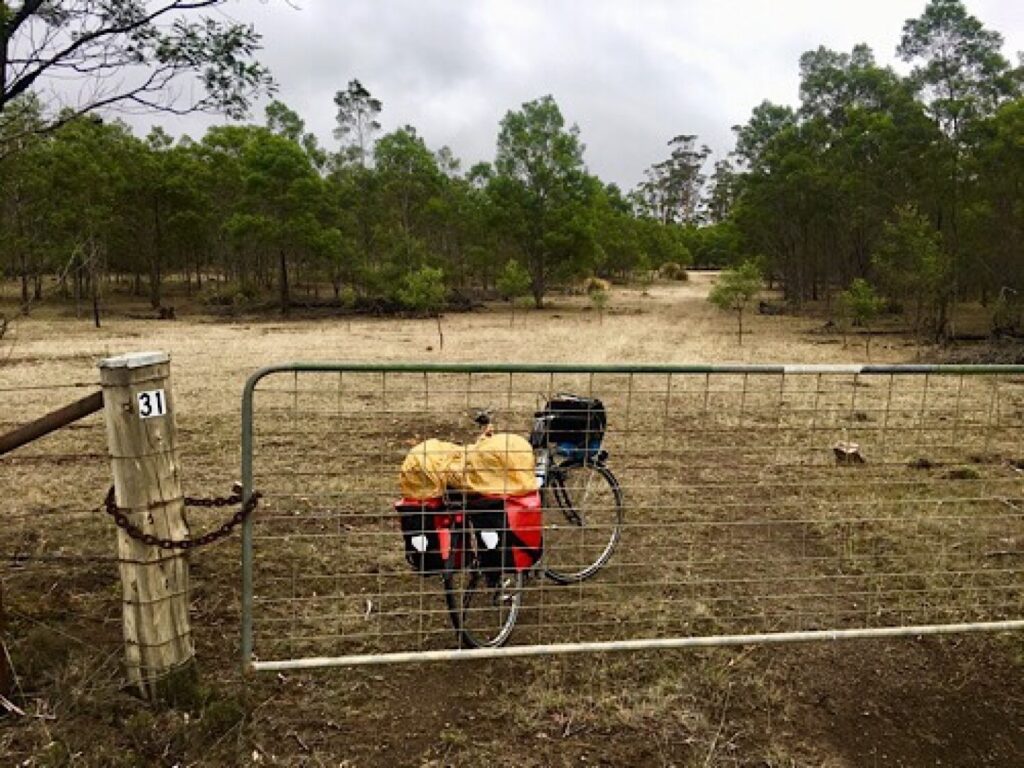
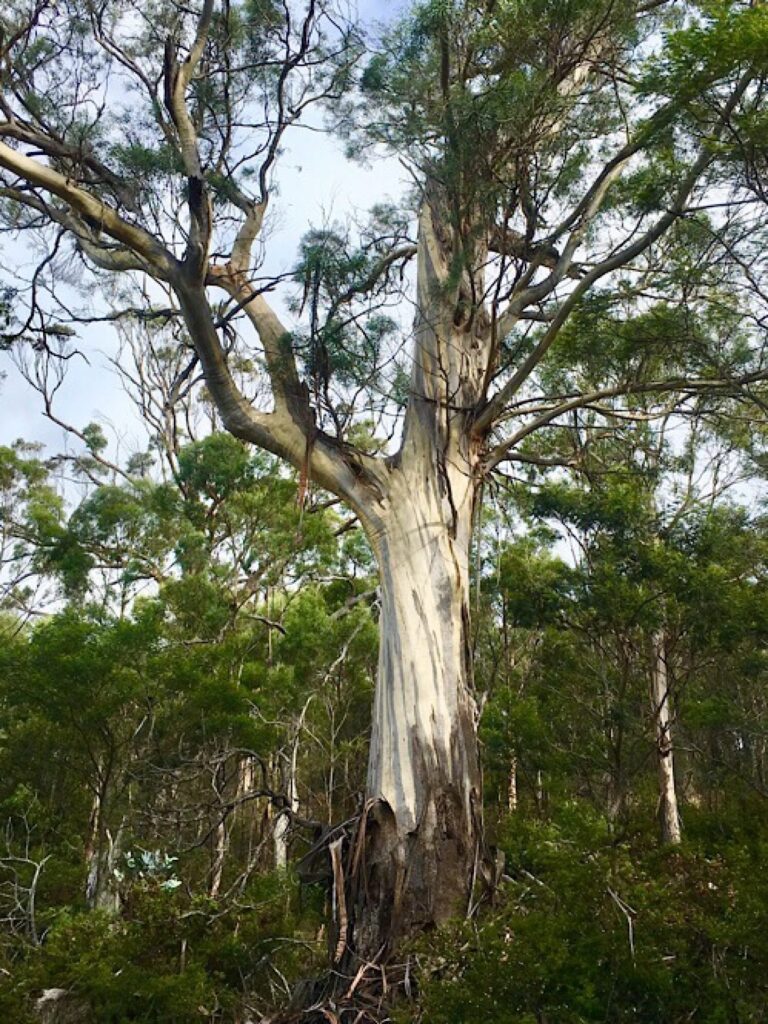
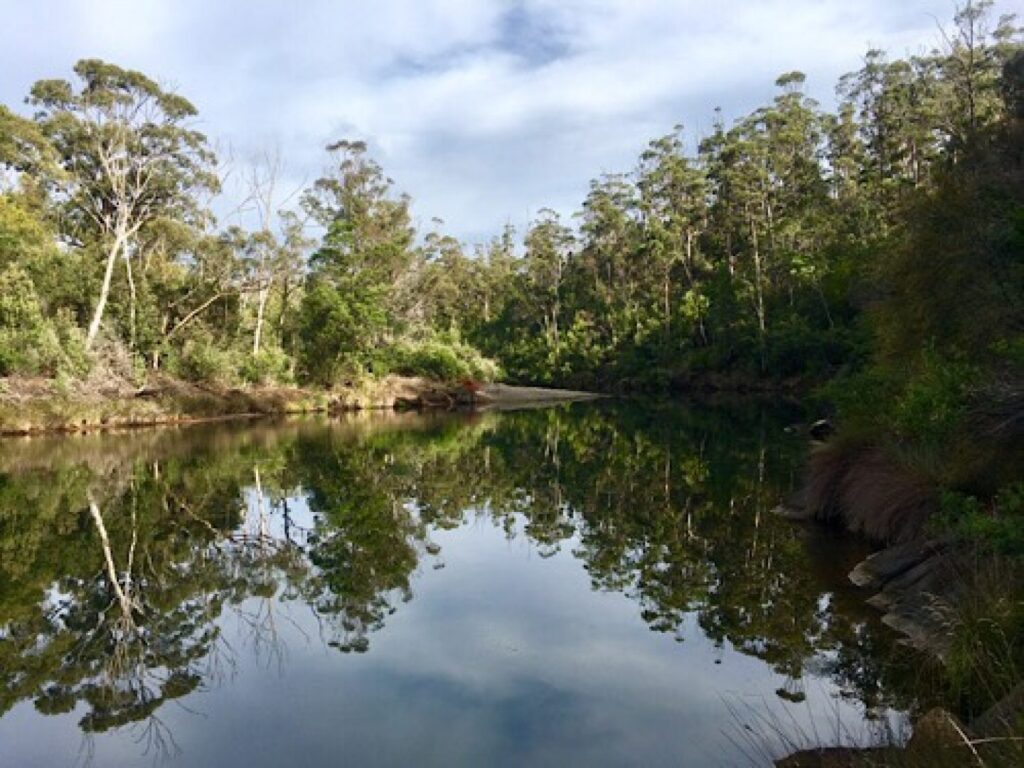
The Tasmanian Land Conservancy works to protect critical native habitat often found only on private land — and they’ve developed three clever ways of doing this. One way is with their revolving fund: they identify land that needs protecting, then buy it and put a conservation ‘covenant’ on it — a legally binding requirement, attached to the land title, that the land stay protected in perpetuity. They then re-sell the land to new owners who are keen to support conservation, thus helping them to bankroll more land purchases.
A second way is by fundraising to purchase critical habitat and establishing private reserves that they manage themselves. The organisation started in 2001 with only $50 in the bank and a handful of committed people, but they’ve now grown to be one of Tasmania’s largest private landholders.
This property in Little Swanport is one that they’re currently fundraising to protect. Phil tells me that partially-degraded land areas are a main source of habitat that some rare or threatened species depend on; and they’re increasingly under threat from developers. In the case of Little Swanport, this is habitat for the critically endangered Swift Parrot of which there are only about 2000 left in the wild. Every spring they migrate to this part of Tasmania to breed, nesting in hollows such as those provided by the old blue gum trees.
Phil explains the science-based approach they use to select a site like this one. The Tas Land Conservancy have developed what’s called their World Class Reserve System, which includes a mapping tool that shows in detail all the reserves and private land in Tasmania. The tool allows them to overlay information for different bio-markers on to the map, such as habitats for endangered species. When these information layers are stacked on top of each other, certain areas of the map start to light up as hotspots. These become the focal areas for their conservation efforts.
The tool allows them to develop a shortlist of private land areas in need of protection, and they use a decision matrix to whittle this list down to find the most important area to focus on. It then becomes a process of having conversations with community members and landholders in the area, finding suitable sites to purchase that meet their conservation objectives, and then negotiating with those landholders.
After my phone chat with Phil I continue exploring the forest. I find I’m appreciating it more now that I understand its significance.
The Swift Parrots are due to start their migration north to the mainland soon, and I wonder if I’ll get to see one. I’ve been occasionally hearing the rapidfire ‘tweet tweet tweet tweet’ of a parrot from the trees around me, so I look up the sound of a Swift Parrot call on my smartphone. It does sound very similar. Could it be? The call comes again, taunting me, but I can’t see the bird that’s making it. I think about what my bird-savvy brother would do if he were here. He’d probably be gliding silently through the undergrowth, binoculars in hand, identifying every species of parrot, wren, thornbill or pardalote. He’d also be telling me off for making too much noise.
A third method of the Tasmanian Land Conservancy is to work with landholders who approach them wanting their land to be protected. This was the case with Tom and Jane Tenniswood, who hosted me on their property yesterday. They told me their story over dinner the previous night.
Tom and Jane originally bought their land to farm sheep, but have since retired and now run a bed and breakfast at their farmhouse instead. They wanted to make sure the approximately 100 ha of forest on their property would remain protected, so in 2001 they applied to the federal government to put a conservation covenant on it. During this process it was discovered that the land was home to a rare species of butterfly.
More recently a group of staff and volunteers from the Tasmanian Museum & Art Gallery came “just for fun” for a week-long field trip to the site, and ended up collecting 885 species of flora and fauna, 10 of which had not been identified or described previously. They named one of the new species of lichen after Jane.
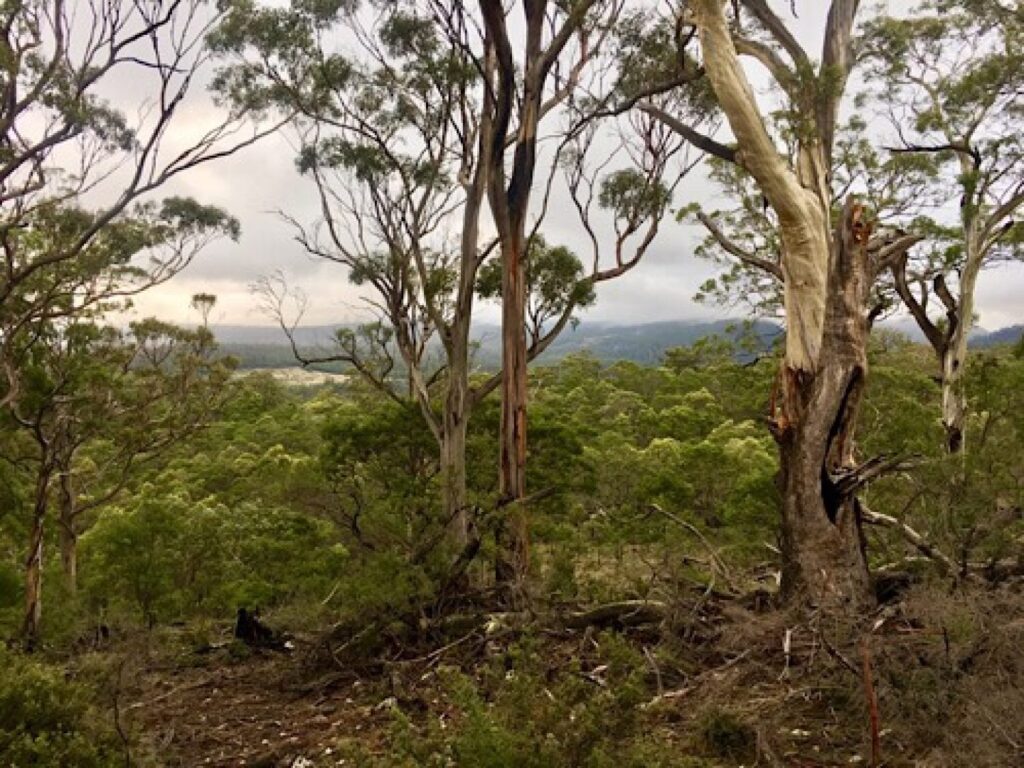
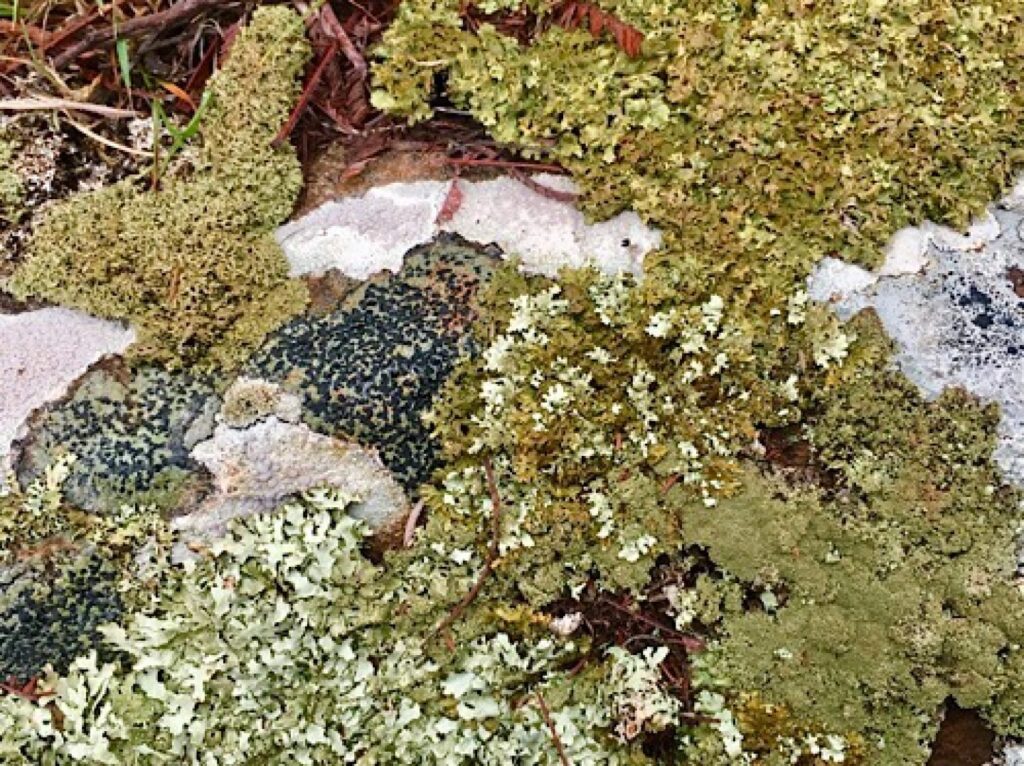
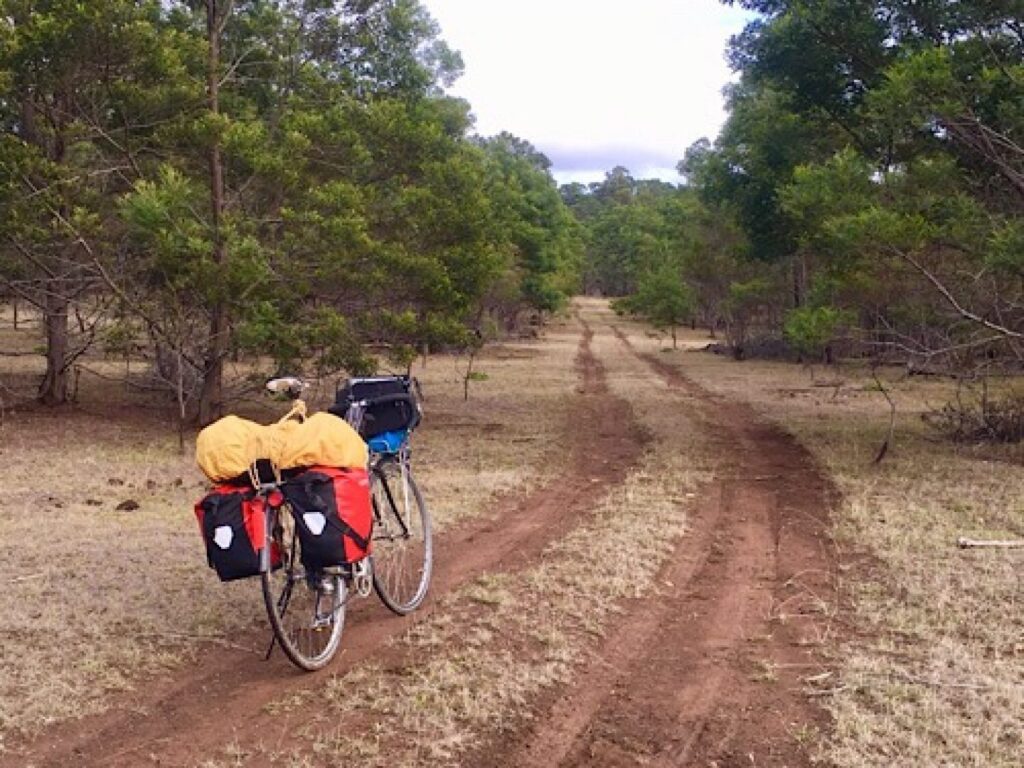
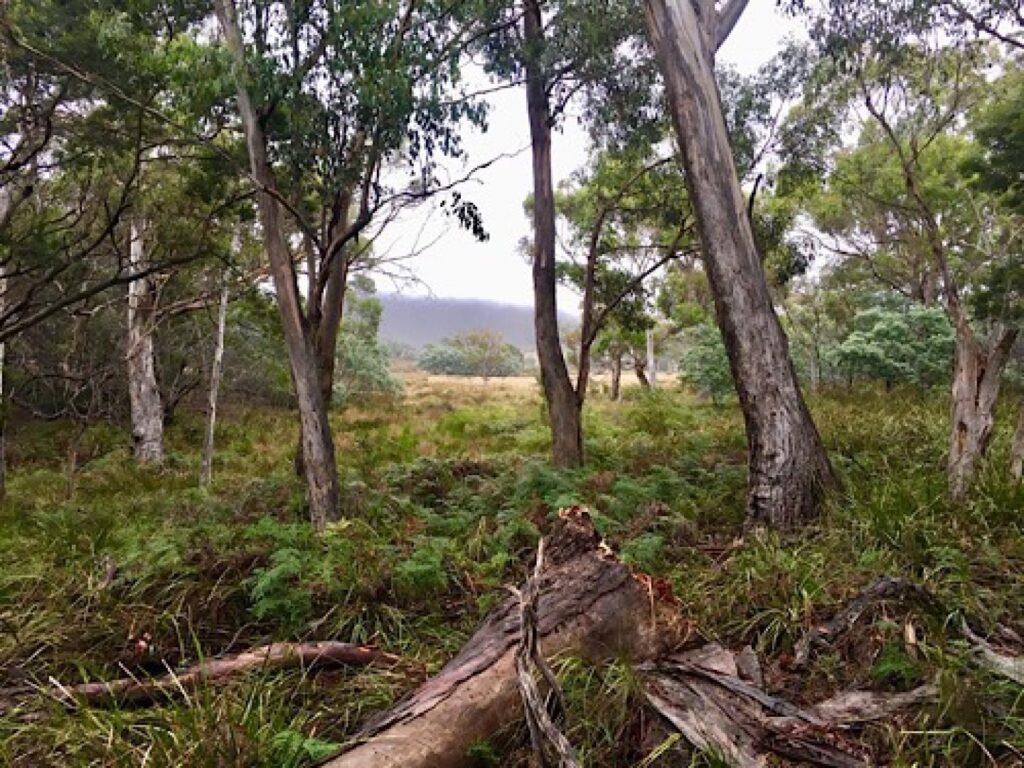
Knowing their land was special, Tom and Jane considered what will happen to it once they’re gone. They wanted someone who would be a custodian of the land to take it on and knew that dividing it amongst their many children and grandchildren wasn’t going to work. So they decided to do something that had never been done before.
After two hours of walking and getting lost following the trail of white posts through Tom and Jane’s forest, I had emerged into a small rocky clearing on a hill where a small sign had been erected. I spent some time walking around and taking it all in. This was the place where history had been made. Three weeks ago several local aboriginal elders had gathered here with the Tenniswoods for the handover ceremony. It was the first time in Tasmania, and likely in Australia, that private land had been gifted to the aboriginal people.
Tom and Jane told me of their friendships with several local aboriginals, and how they’d known of the connection the local aboriginal community had with their area. With the help of the Tas Land Conservancy, Tom and Jane got in touch with the Aboriginal Land Council to ask if they wanted the land. At first they thought we were offering to sell it to them, Jane told me. “No, we want to give it to you”, she said. They were shocked.
I phoned up Graeme Gardner, a Pakana man and the manager of the Aboriginal Land Council of Tasmania, to ask what this meant for the land. He said that once it’s become ‘aboriginal land’ it can never be sold or developed. Because of the genocide of the Tasmanian aboriginals, there wasn’t a local tribal group who could receive the land, so instead it’s managed by the Land Council on behalf of all the aboriginal people of Tasmania. Not only will they be custodians of the land, they see it as a chance for them to learn more about the environment there and to teach others.
After leaving the ceremony site, the forest soon opened up into a wide grassland covered with sedge and I finally reached the road on the far boundary of the property. I considered following this boundary road back to the house; it would certainly have been quicker and easier. It took me only a moment to decide: I turned around and set off back into the forest.
I’ve now said farewell to Tom and Jane’s place and it’s time for me to leave Little Swanport too, continuing my own migration north. In the short time I’ve been here I feel I’ve developed a small connection to these two pieces of private forest, and it’s heartwarming to know there are people so devoted to protecting these important habitats. As I finish loading my bike and cycle away, I decide that one day I’d like to come here again, to see the forest grown and hopefully, finally, see a Swift Parrot.
Read more about the Tasmanian Land Conservancy’s Little Swanport campaign at: https://tasland.org.au/reserves/little-swanport/
A huge thank you to Phil Roach for all his time and patience, to Tom and Jane Tenniswood for their warm hospitality, and also to Graeme Gardner for taking the time to talk with me.




